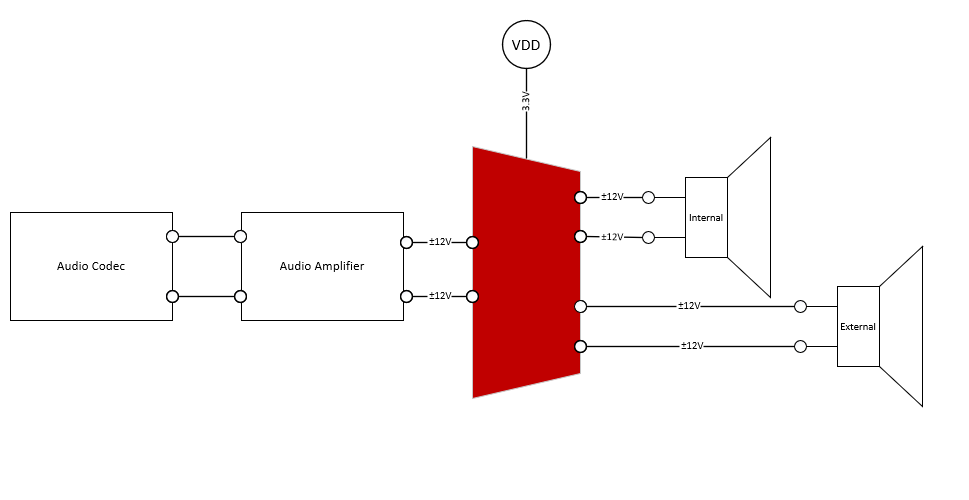SCDA049 April 2024 TMUX4827
2.3 Negative and Positive Beyond the Supply
You can also have a device that supports both positive and negative beyond the supply use-cases, which is often used where audio signals are switched between multiple audio sources, such as internal and external speakers, in a system. A mux can be a useful tool to help switch the audio source between these different sources. As mentioned earlier, in these audio settings the usual voltage supply in the system is at the range of 1.8V to 5V; however, audio signals can exceed the range of the system power supply. To accommodate the audio signal range requirements a multiplexer with beyond the supply feature is needed, specifically with Positive and Negative Beyond the Supply. Table 2-3 shows the TMUX4827 beyond the supply capabilities. The Signal path I/O is capable to pass a signal between -12V and 12V.
| MIN | MAX | UNIT | ||
|---|---|---|---|---|
| VDD | Positive power supply voltage | 1.8 | 5.5 | V |
| VS or VD | Signal path input/output voltage (source or drain pin) (Sx, D) | -12 | 12 | V |
In Figure 2-3, shows an example using the TMUX4827 to switch between audio sources. The codec can send a negative signal, while the amplifier output can exceed the typical supply range.
 Figure 2-3 TMUX4827 a 2:1 2-Channel
Multiplexer Powered by a 3.3V Supply, Passing 12V and -12V Input Signals to an
Internal and External Speakers
Figure 2-3 TMUX4827 a 2:1 2-Channel
Multiplexer Powered by a 3.3V Supply, Passing 12V and -12V Input Signals to an
Internal and External SpeakersMultiplexers with beyond the supply feature such as the TMUX4827 and the TS5A22364 are mainly used for audio applications.